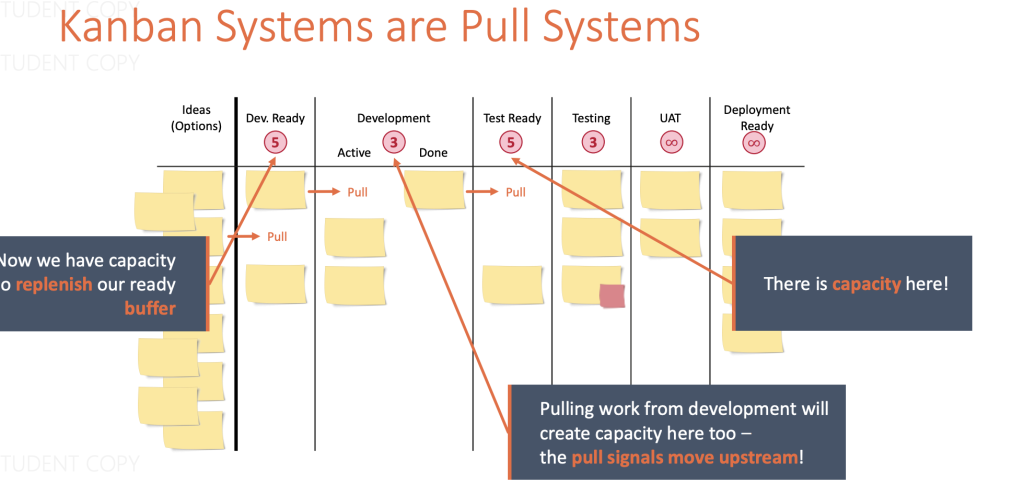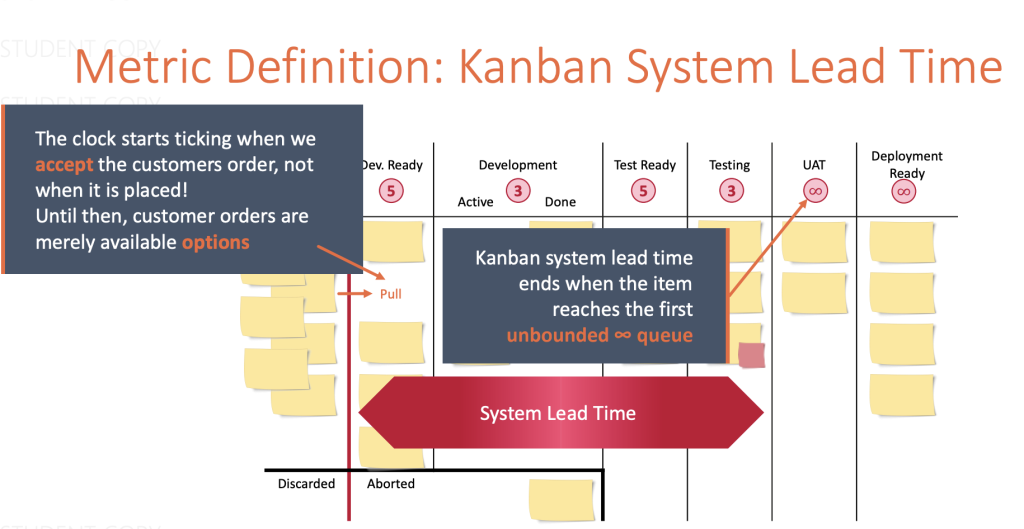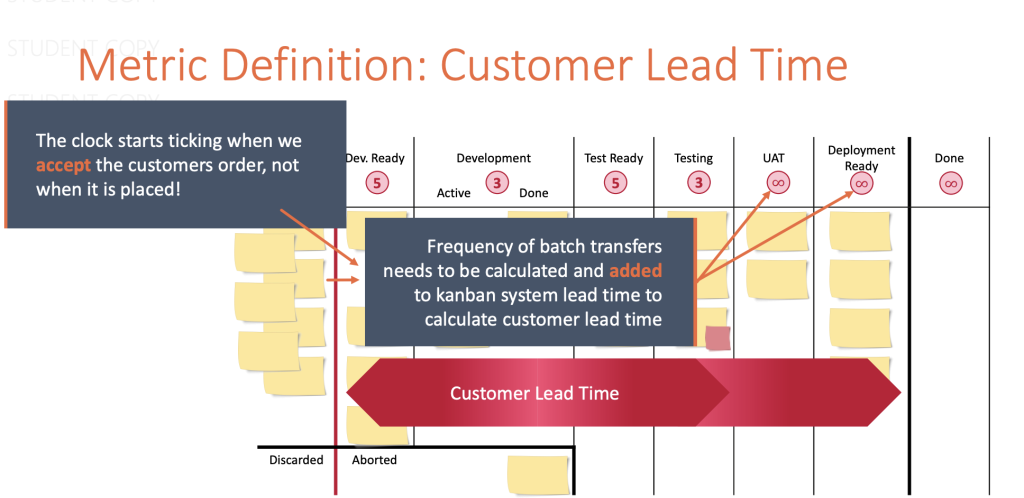Kanban: A Brief History
Kanban, which means “visual signal” or “card” in Japanese, originated as a manufacturing system in Toyota’s factories in Japan during the late 1940s.
The goal was to improve efficiency and reduce waste by visualizing the flow of work and inventory. Workers used cards to signal when they needed more materials or when a task was completed, allowing for a just-in-time production process.
Over time, Kanban evolved beyond manufacturing and became a popular method for managing knowledge work, such as software development and project management. It emphasizes continuous improvement, collaboration, and transparency.
Today, Kanban is used by organizations around the world to optimize their processes and deliver value to customers faster.
Who Started Kanban Concept in Software Industry
David J. Anderson who introduced the concept of kanban to the software development industry in his book ‘Kanban: Successful Evolutionary Change for Your Technology Business’. Anderson saw the potential of kanban in software development as a way to improve flow and reduce waste.
Anderson’s book provided practical guidance on how to apply kanban in software development, including visualizing work, limiting work in progress, managing flow, making process policies explicit, implementing feedback loops, and improving collaboratively.
Since then, kanban has become a popular agile methodology used by software development teams worldwide.
Kanban Practices
One of the key principles of Kanban is to limit work in progress (WIP).
Teams should use a Kanban board or other visual tool to track the status of each task, from backlog to completion. This allows team members to see the big picture and identify areas for improvement.
Kanban also emphasizes continuous improvement. Teams should regularly review their processes and look for ways to optimize flow and reduce waste.
Finally, collaboration is essential in Kanban. Team members should work together to identify blockers and find solutions, and they should be encouraged to share knowledge and expertise.

Elements of Kanban Method: General Practice
One of the key practices of Kanban is visualizing work. This means creating a visual representation of all the work that needs to be done, so that everyone involved can see what needs to be done, who is responsible for doing it, and how long it will take.
The visual representation can be anything from a whiteboard with sticky notes to a digital tool like Trello or Jira. By visualizing work, teams can better manage their workflow and identify bottlenecks and areas for improvement.
Another important practice of Kanban is limiting work in progress.
Finally, managing flow is another key practice of Kanban. This means ensuring that work moves smoothly through the system, without getting stuck or delayed.
One way to do this is by using a pull system, where work is only started when there is capacity to complete it. This helps to prevent overloading the system and ensures that work is completed in a timely manner.
Another way to manage flow is by identifying and removing bottlenecks, which can help to speed up the overall process.
Elements of Kanban Method: Service Delivery Principles
One of the most important principles is customer focus, which ensures that the needs and expectations of customers are met or exceeded. This principle encourages organizations to build strong relationships with their customers and to understand their unique requirements.
Another key principle is leadership, which involves creating a culture of continuous improvement and empowering employees to make decisions. This principle helps organizations to adapt to changing market conditions and to stay ahead of the competition.
Finally, understanding and agreeing to service delivery policies is essential for ensuring that everyone in the organization is aligned and working towards common goals.
Elements of Kanban Method: Change Management Principles
Kanban’s change management principles revolve around starting with what you do now, pursuing incremental and evolutionary change, and respecting the current process, roles, responsibilities, and titles.
- Acknowledge the existing processes and build upon them instead of starting from scratch.
- Reducing resistance to change and ensuring a smooth transition.
- Pursuing incremental and evolutionary change allows for continuous improvement without disrupting the workflow.
- Finally, respecting the current process, roles, responsibilities, and titles ensures that everyone is on board with the changes and feels valued.
Limit WIP
Limiting work in progress (WIP) is a fundamental concept of Kanban. It involves setting a maximum limit on the number of tasks that can be worked on simultaneously. This helps to avoid overburdening team members and ensures that tasks are completed efficiently.
By limiting WIP, teams can focus on completing tasks one at a time, reducing multitasking and context switching. This leads to better productivity, higher quality work, and shorter lead times. Additionally, limiting WIP helps to identify bottlenecks and areas for improvement in the workflow.

Pull System
In Kanban, the pull system is a method of managing work that involves starting new tasks only when there is capacity available to do so. This helps to prevent team members from becoming overwhelmed with too much work and ensures that tasks are completed in a timely manner. By pulling the next highest priority task from the backlog as soon as one is completed, the team can maintain a steady flow of work without overburdening themselves.
The pull system is also useful for identifying bottlenecks in the process. If a task is waiting for approval or is stuck in another stage of the workflow, it will not be pulled until the bottleneck is addressed. This helps to ensure that tasks move through the system smoothly and without delays.

Manage Flow in Kanban Board
Managing flow in a Kanban board is crucial to ensure that work items move through the system efficiently. One way to manage flow is to limit the amount of work in progress (WIP) at each stage of the process. By doing so, teams can prevent bottlenecks from forming and ensure that work items are completed in a timely manner. Another way to manage flow is to prioritize work items based on their value to the customer. This helps teams focus on delivering the most important work first and ensures that valuable work is not delayed due to lower priority items.
In addition to these strategies, teams can also use visual cues to manage flow in their Kanban board. For example, color coding cards based on their priority or type of work can help teams quickly identify which items need immediate attention. Similarly, using swimlanes to separate work items by team or department can help ensure that work is flowing smoothly through the system.

Metric Definition
How can we measure andunderstand the behaviorof flow-based systems?
Kanban uses three metrics to measure and improve the performance of the system: lead time, cycle time, and throughput.
Kanban: System Lead Time
System lead time is an important metric in Kanban methodology that measures the total time taken to deliver a task from the point of request until it is completed. This includes all the steps involved in the process such as design, development, testing, analysis, and deployment ready.
By tracking system lead time, teams can identify their efficiency in delivering customer value and optimize their workflow to reduce waste and improve delivery speed.
Measuring system lead time helps in predicting the Completion date of a task and provides insights into how long it takes to deliver a particular type of work.

Kanban: Customer Lead Time
Customer lead time is a crucial metric in Kanban methodology that measures the total time taken to deliver a task from the customer’s point of view.
This includes the time taken to request, process, and deliver the task. By tracking customer lead time, teams can identify their efficiency in delivering value to customers and optimize their workflow to reduce waste and improve delivery speed.
Measuring customer lead time helps in predicting the delivery date of a task and provides insights into how long it takes to deliver a particular type of work from the customer’s perspective. This helps teams in setting realistic expectations with customers and building trust.

Throughput / Flow Efficiency: Kanban Metrics
Throughput is the rate at which work items are completed, and it helps teams identify bottlenecks in their process. By tracking this metric, teams can make data-driven decisions to improve their workflow and increase efficiency.
Throughput is a measure of how much work is being completed over a period of time.
Flow efficiency measures the share of total lead time which is spent actually adding value.
This means that it takes into account the time spent on non-value-adding activities such as waiting, rework, and handoffs. By increasing flow efficiency, teams can reduce waste and deliver more value to customers in less time.
Be the Water
Kanban is all about flow, and one of the best ways to achieve that is by being like water. Water flows effortlessly around obstacles, finding the path of least resistance.
Teams can learn from this by embracing change and adapting to new situations. By being flexible and open to new ideas, teams can improve their flow and deliver more value to customers.
Being the water also means being patient and persistent. Just as water slowly carves its way through rock, teams must be willing to stick with a process and make small improvements over time.
By continuously refining their workflow and eliminating waste, teams can achieve a state of flow that allows them to deliver high-quality work consistently.
![]()